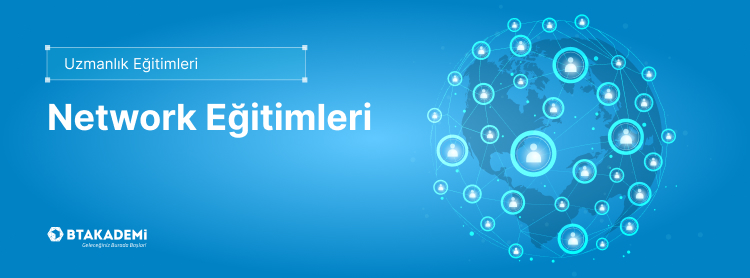
Ön Koşul
.
Eğitim Hakkında
Sertifika:
Eğitimlerimize %80 oranında katılım gösterilmesi ve eğitim müfredatına göre uygulanacak sınav/projelerin başarıyla tamamlanması durumunda, eğitimin sonunda dijital ve QR kod destekli “BT Akademi Başarı Sertifikası” verilmektedir.
Eğitim İçeriği
- 1 Describe distributed applications related to the concepts of front-end, back-end, and load balancing
- 2 Evaluate an application design considering scalability and modularity
- 3 Evaluate an application design considering high-availability and resiliency (including on-premises, hybrid, and cloud)
- 4 Evaluate an application design considering latency and rate limiting
- 5 Evaluate an application design and implementation considering maintainability
- 6 Evaluate an application design and implementation considering observability
- 7 Diagnose problems with an application given logs related to an event
- 8 Evaluate choice of database types with respect to application requirements (such as relational, document, graph, columnar, and Time Series)
- 9 Explain architectural patterns (monolithic, services oriented, microservices, and event driven)
- 10 Utilize advanced version control operations with Git
- 10.a Merge a branch
- 10.b Resolve conflicts
- 10.c git reset
- 10.d git checkout
- 10.e git revert
- 11 Explain the concepts of release packaging and dependency management
- 12 Construct a sequence diagram that includes API calls
- 1 Implement robust REST API error handling for time outs and rate limits
- 2 Implement control flow of consumer code for unrecoverable REST API errors
- 3 Identify ways to optimize API usage through HTTP cache controls
- 4 Construct an application that consumes a REST API that supports pagination
- 5 Describe the steps in the OAuth2 three-legged authorization code grant flow
- 1 Construct API requests to implement chatops with Webex Teams API
- 2 Construct API requests to create and delete objects using Firepower device management (FDM)
- 3 Construct API requests using the Meraki platform to accomplish these tasks
- 3.a Use Meraki Dashboard APIs to enable an SSID
- 3.b Use Meraki location APIs to retrieve location data
- 4 Construct API calls to retrieve data from Intersight
- 5 Construct a Python script using the UCS APIs to provision a new UCS server given a template
- 6 Construct a Python script using the Cisco DNA center APIs to retrieve and display wireless health information
- 7 Describe the capabilities of AppDynamics when instrumenting an application
- 8 Describe steps to build a custom dashboard to present data collected from Cisco APIs
- 1 Diagnose a CI/CD pipeline failure (such as missing dependency, incompatible versions of components, and failed tests)
- 2 Integrate an application into a prebuilt CD environment leveraging Docker and Kubernetes
- 3 Describe the benefits of continuous testing and static code analysis in a CI pipeline
- 4 Utilize Docker to containerize an application
- 5 Describe the tenets of the "12-factor app"
- 6 Describe an effective logging strategy for an application
- 7 Explain data privacy concerns related to storage and transmission of data
- 8 Identify the secret storage approach relevant to a given scenario
- 9 Configure application specific SSL certificates
- 10 Implement mitigation strategies for OWASP threats (such as XSS, CSRF, and SQL injection)
- 11 Describe how end-to-end encryption principles apply to APIs
- 1 Explain considerations of model-driven telemetry (including data consumption and data storage)
- 2 Utilize RESTCONF to configure a network device including interfaces, static routes, and VLANs (IOS XE only)
- 3 Construct a workflow to configure network parameters with:
- 3.a Ansible playbook
- 3.b Puppet manifest
- 4 Identify a configuration management solution to achieve technical and business requirements
- 5 Describe how to host an application on a network device (including Catalyst 9000 and Cisco IOx-enabled devices)
Neden Bu Eğitimi Almalısınız ?
.
Önemli Notlar
Program ücretlerine KDV dahil değildir.
Paylaş:

